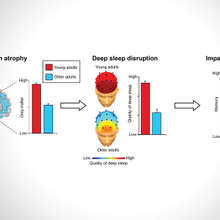Hyperactivity in children with ADHD may actually serve to enhance their learning and memory abilities, reports a study published in the Journal of Abnormal Child Psychology.
Impediment or focusing mechanism?
Excess gross motor activity—or hyperactivity—is a core diagnostic feature of childhood attention-deficit/hyperactivity disorder (ADHD), and it has long been considered a major impediment to learning for those affected.
This view, however, is challenged by the current study, which suggests that hyperactivity in these children serves as a focusing or compensatory mechanism to better facilitate their learning capacity and memory acquisition.
Movement and working memory
To test this new theory, researchers at the University of Mississippi measured in 52 boys and girls their activity level in relation to performance on a variety of working memory tests. Half of the participants met the criteria for ADHD, while the other half consisted of typically developing children as control subjects.
Each child was objectively assessed on four working-memory tasks, which involved letter-number sequencing and were administered during four separate sessions.
Researchers of the study explained that working memory—as opposed to short-term memory—is a higher-level function, engaged when a person must manipulate and process information to arrive at a conclusion. It is, thus, a critical factor in fostering learning.
The results were then recorded alongside the corresponding behavioral observations for each child’s gross motor activity during each task.
What the findings mean
Analysis of study data showed that the ADHD children performed significantly better overall on working memory tasks during higher rates of motor activity. Conversely, the typically developing children showed a somewhat reduced level in performance with increased activity.
Researchers concluded that better clarity when defining ‘hyperactive’ behavior in ADHD children is needed. Increased caution must be taken to avoid overcorrecting certain motor activities, which may serve a functional purpose for these children.
Furthermore, researchers also provide initial evidence to promote the inclusion of classroom devices or techniques that can better facilitate ADHD children’s functional movements while minimizing their disruptive nature. For example, activity balls or stationary bikes may be used during reading sessions.





